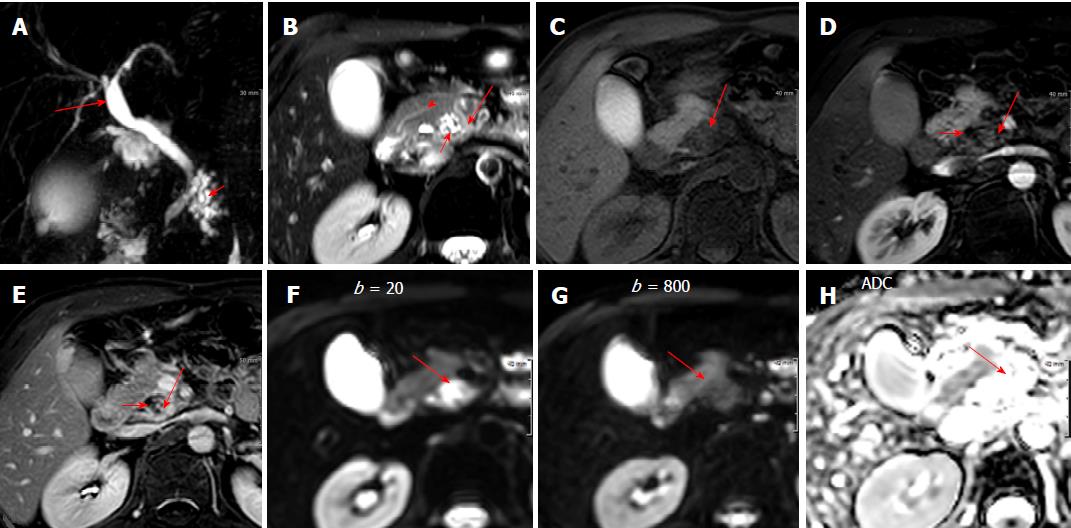Copyright
©The Author(s) 2018.
World J Gastroenterol. Jan 14, 2018; 24(2): 297-302
Published online Jan 14, 2018. doi: 10.3748/wjg.v24.i2.297
Published online Jan 14, 2018. doi: 10.3748/wjg.v24.i2.297
Figure 2 Findings from magnetic resonance image.
A: Magnetic resonance (MR) cholangiopancreatography shows localized branch pancreatic duct dilatation (short arrow) in head of pancreas with tapering of distal common bile duct and dilatation of proximal common duct (long arrow); B: T2-weighted MR image shows slight high signal intensity lesion (long arrow) containing bright intensity branch duct dilatation (short arrow) in head and uncinate process of pancreas, and incidental finding of pancreatic divisum (arrowhead); C: Fat-suppressed T1-weighted MR image shows a well-demarcated low signal intensity lesion (long arrow) in uncinate process and head of pancreas; D-E: Fat-suppressed T1-weighted gadolinium-enhanced arterial- (D) and delayed-phase (E) MR images show delayed highly enhancing solid mass-like lesion (long arrows) containing non-enhancing dark intensity branch duct dilatation (short arrows) in pancreatic head; F: The higher signal intensity lesion (arrow) on diffusion-weighted image obtained with b = 20 s/m2 shows as low signal intensity (arrow) on diffusion-weighted image obtained with b = 800 s/m2 and as higher (arrow) apparent diffusion coefficient (ADC) without diffusion restriction.
- Citation: Jee KN. Mass forming chronic pancreatitis mimicking pancreatic cystic neoplasm: A case report. World J Gastroenterol 2018; 24(2): 297-302
- URL: https://www.wjgnet.com/1007-9327/full/v24/i2/297.htm
- DOI: https://dx.doi.org/10.3748/wjg.v24.i2.297









